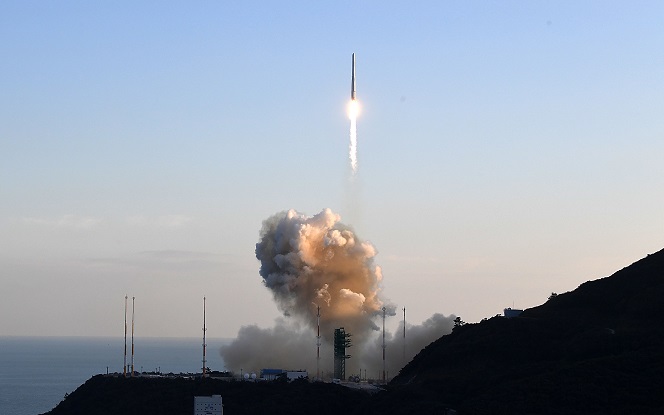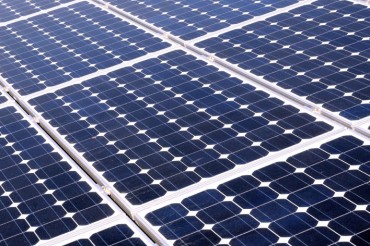
This photo shows South Korea’s launch of its first homegrown space rocket KSLV-II at the Naro Space Center in the country’s southern coastal village of Goheung on Oct. 21, 2021. (Pool photo) (Yonhap)
SEOUL, Feb. 25 (Korea Bizwire) — South Korea said Friday that it plans to make a second attempt to launch its homegrown space rocket in mid-June, about eight months after its first flight ended in failure due to technical glitches.
The Nuri rocket will be lifted off on June 15, about one month later than earlier scheduled as more time is needed to fix technical glitches blamed for the previous flight’s failure to put a dummy satellite into orbit, according to the science ministry.
“It requires around an additional month to make all these technical improvements, and to assemble the first, second and third stages of the flight model, and to install the satellite,” the ministry said, explaining the cause of the delay from the initially planned launch in May.
In October last year, the country launched its first homegrown space rocket, also known as the KSLV-II, which successfully flew to a target altitude of 700 kilometers but failed to put a dummy satellite into orbit as its third-stage engine burned out earlier than expected.
A governmental committee of researchers and aerospace experts concluded that the helium tank in the third-stage rocket fell off of its anchoring device equipped inside the oxidizer tank of the rocket due to increased buoyancy during the flight.
The detached helium tank then moved around inside the oxidizer tank, damaging the tank and causing leakage of helium and oxidizer.
The lack of oxidizer flowing into the third-stage rocket eventually caused the engine to shut off prematurely, according to the committee.
The cover of the oxidizer tank in the third-stage rocket will also be built thicker, the ministry said, to better withstand a rise in buoyancy during the flight in June.

South Korea’s first homegrown space launch vehicle, known as Nuri, is lifting off from the Naro Space Center in Goheung, South Jeolla Province, 473 kilometers south of Seoul, on Oct. 21, 2021. (Pool photo) (Yonhap)
Researchers had earlier aimed to keep the oxidizer tank lightweight to allow more room for the rocket to carry the payload.
“Since the third-stage rocket carries the satellite, it is very important to reduce weight as losing one kilogram allows a satellite to be one kilogram heavier … but we decided it was better to make improvements to the cover,” an ICT ministry official said during a press briefing Thursday.
The ministry said it set the preliminary launch period from June 16-23 in case the June 15 launch is not carried out as planned but the final date could change depending on various factors, such as weather conditions.
The second launch of the Nuri will carry a 200-kilogram satellite and a 1.3-ton dummy payload.
South Korea has invested nearly 2 trillion won (US$1.8 billion) in building the three-stage Nuri since 2010.
The whole process of the launch of Nuri was carried out with domestically made technology on South Korean soil, including design, production, testing and launch operation.
(Yonhap)





